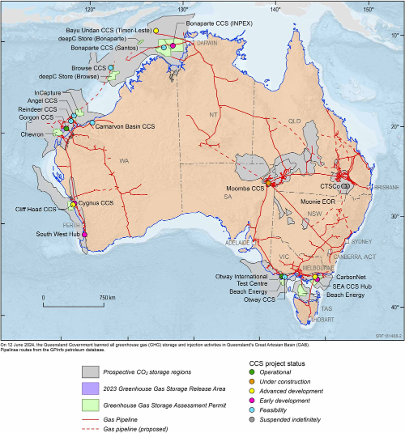Unprepared and unhedged: Why most Australian companies face uncertain energy costs
- Decarbonology
- Nov 7, 2024
- 3 min read

In May 2024, the Australian Energy Regulator released their report valuing carbon emissions. Carbon emissions pricing in 2024 kicks off at AUD 70 per tonne CO2-e rising steadily to AUD 420 per tonne CO2-e by 2050.
This is transformational and signals a critical turning point in the energy pricing landscape for Australian companies, many of whom are unprepared for the potential added expense of future carbon emissions pricing. Without adequate hedging strategies, companies are exposed to significant financial risks that may compound over time, especially as carbon emissions prices are set to escalate rapidly.
The unhedged reality for Australian businesses
Despite the introduction of these interim carbon prices, a large proportion of Australian companies remain unhedged regarding future energy and emissions costs. This means they have not integrated the potential financial impacts of emissions into their long-term energy planning and budgeting. As the interim values suggest, the costs associated with carbon emissions are expected to escalate year on year, adding a layer of volatility to energy expenses that companies have yet to fully account for.
Many organisations have traditionally viewed energy pricing based on past trends and assuming limited price volatility. However, with the new emissions pricing from the AER this approach is outdated and cavalier. The lack of an emissions-based hedge leaves these companies vulnerable, with operational costs likely to rise as carbon pricing frameworks are solidified.
What does it mean to be “Unhedged” in energy pricing?
To be unhedged in energy pricing means that a business has no financial strategies or instruments in place to mitigate the risk of increased costs due to carbon emissions. Hedging typically involves securing fixed-rate contracts or utilising financial instruments to offset the potential impact of rising costs. For energy-intensive industries or businesses with high emissions, a lack of hedging against carbon price escalation is akin to being financially exposed to the full impact of carbon regulation without a buffer.
With the price of carbon emissions beginning at AUD 70 per tonne and climbing each year, companies face the risk of rising operational expenses. This could lead to compressed profit margins, higher costs for consumers, and potential disadvantages in global competitiveness. Businesses that have not factored these costs into their operations are effectively gambling against the forecasted rise in carbon prices, a gamble which may prove costly as prices climb towards AUD 420 per tonne by 2050.
The road ahead: Risks and strategic adjustments
The introduction of interim carbon pricing by the AER emphasises the urgent need for companies to reassess their energy and emissions strategies. In the current landscape, several key risks and considerations stand out:
Financial exposure: Without emissions hedging, companies may find it challenging to manage operating costs as carbon prices increase. Industries that rely heavily on fossil fuels are particularly vulnerable, as they face higher emissions costs relative to low-carbon competitors.
Competitive disadvantages: Companies that fail to account for carbon costs in their pricing models may find themselves at a competitive disadvantage against more forward-thinking businesses that proactively manage emissions. By building carbon costs into their pricing structures, these organisations can position themselves as leaders in a carbon-conscious marketplace.
Incentives for emissions reduction: The forecasted increase in emissions prices provides a strong incentive for companies to invest in emissions reduction. By decreasing their overall emissions footprint, businesses can mitigate the financial impact of rising carbon costs, improve their sustainability profile, and enhance their appeal to environmentally conscious consumers and investors.
How to adapt to the new carbon reality?
Businesses can take several steps to protect themselves from escalating carbon prices. Adopting emissions-reducing technologies, re-evaluating energy supply contracts, sourcing energy from renewable sources or carbon credit futures.
With the AER’s emissions pricing guidance should be a wake-up call. The transition towards a more carbon-conscious economy continues and businesses that plan for and adapt to this shift will be better positioned for the future.
Table 1 Indirect (scope 2 and scope 3) emission factors from consumption of purchased or acquired electricity - National Greenhouse and Energy Reporting
State, Territory or grid description | Scope 2 Emission Factors | Scope 3 Emission Factors | Total Scope 2&3 Emission Factors | Cost per kWh at $70/tCO₂-e 2024 |
| (kg CO2-e/kWh) | (kg CO2-e/kWh) | (kg CO2-e/kWh) | (cents CO2-e/kWh) |
New South Wales and Australian Capital Territory | 0.66 | 0.04 | 0.7 | 0.05 |
Victoria | 0.77 | 0.09 | 0.86 | 0.06 |
Queensland | 0.71 | 0.1 | 0.81 | 0.06 |
South Australia | 0.23 | 0.05 | 0.28 | 0.02 |
Western Australia - South West Interconnected System (SWIS) | 0.51 | 0.06 | 0.57 | 0.04 |
Western Australia - North Western Interconnected System (NWIS) | 0.61 | 0.09 | 0.7 | 0.05 |
Tasmania | 0.15 | 0.03 | 0.18 | 0.01 |
Northern territory -Darwin Katherine Interconnected System (DKIS) | 0.56 | 0.07 | 0.63 | 0.04 |
National | 0.63 | 0.07 | 0.7 | 0.05 |
Sources: Primary data sources comprise National Greenhouse and Energy Reporting (Measurement) Determination 2008 (Schedule 1), Australian Energy Regulator pricing $70 per MWh or 70 cents per kWh




Comments